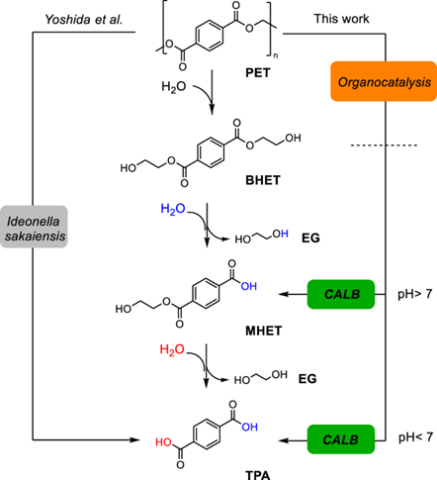Biocatalysis is a key technology enabling plastic recycling. However, despite advances done in the development of plastic-degrading enzymes, the molecular mechanisms that govern their catalytic performance are poorly understood, hampering the engineering of more efficient enzyme-based technologies. In this work, we study the hydrolysis of PET-derived diesters and PET trimers catalyzed by the highly promiscuous lipase B from Candida antarctica (CALB) through QM/MM molecular dynamics simulations supported by experimental Michaelis–Menten kinetics. The computational studies reveal the role of the pH on the CALB regioselectivity toward the hydrolysis of bis-(hydroxyethyl) terephthalate (BHET). We exploit this insight to perform a pH-controlled biotransformation that selectively hydrolyzes BHET to either its corresponding diacid or monoesters using both soluble and immobilized CALB. The discoveries presented here can be exploited for the valorization of BHET resulting from the organocatalytic depolymerization of PET.

